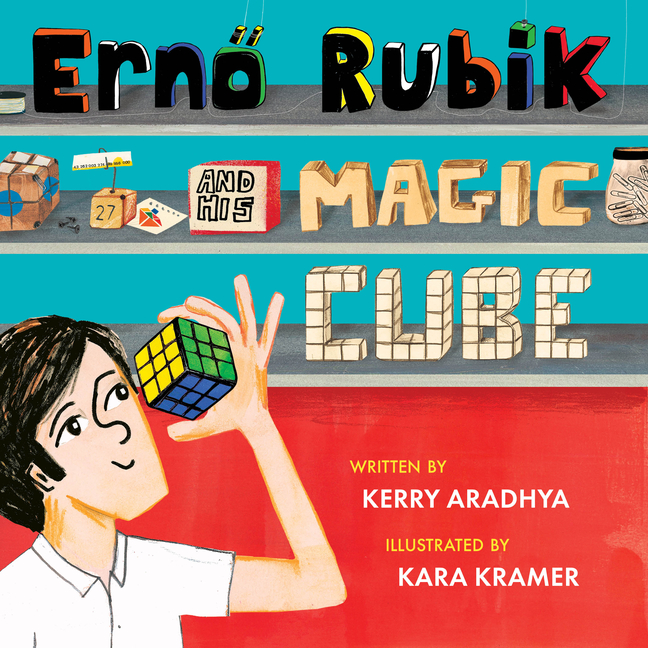Book Description
for Ernö Rubik and His Magic Cube by Kerry Aradhya and Kara Kramer
From the Publisher
This first picture book biography of Rubik’s Cube creator Erno Rubik reveals the obsession, imagination, and engineering process behind creating an iconic puzzle.
Celebrating 50 years of the most popular puzzle in history!
In the hills of Budapest, near the banks of the Danube River, lived a quiet boy named Ernő Rubik. He loved books, art, nature, and—most of all—puzzles. And he grew up to create the most popular puzzle in history. This picture book biography explores the experience and interests that inspired the inventor of the Rubik’s Cube.
From the time he was a child, Ernő was curious about the objects around him. What did they look like on the inside? What about geometric shapes? How many ways could he fit them together? Could he combine them so they somehow became something that was greater than its components?
Ernő grew up and became a professor of architecture and design. Still fascinated with how shapes worked together, he fashioned an object, a cube made up of smaller cubes that twisted and turned without breaking. This object eventually became known as the most popular puzzle in history, the Rubik’s Cube.
Kerry Aradhya’s accessible text takes us behind the scenes of the creative process and into the mind and imagination of a remarkable inventor. Kara Kramer’s cheerful, multi-media illustrations encourage readers to think about inspiration, reflection, and the joy of puzzles—and solutions.
Celebrating 50 years of the most popular puzzle in history!
In the hills of Budapest, near the banks of the Danube River, lived a quiet boy named Ernő Rubik. He loved books, art, nature, and—most of all—puzzles. And he grew up to create the most popular puzzle in history. This picture book biography explores the experience and interests that inspired the inventor of the Rubik’s Cube.
From the time he was a child, Ernő was curious about the objects around him. What did they look like on the inside? What about geometric shapes? How many ways could he fit them together? Could he combine them so they somehow became something that was greater than its components?
Ernő grew up and became a professor of architecture and design. Still fascinated with how shapes worked together, he fashioned an object, a cube made up of smaller cubes that twisted and turned without breaking. This object eventually became known as the most popular puzzle in history, the Rubik’s Cube.
Kerry Aradhya’s accessible text takes us behind the scenes of the creative process and into the mind and imagination of a remarkable inventor. Kara Kramer’s cheerful, multi-media illustrations encourage readers to think about inspiration, reflection, and the joy of puzzles—and solutions.
Publisher description retrieved from Google Books.


